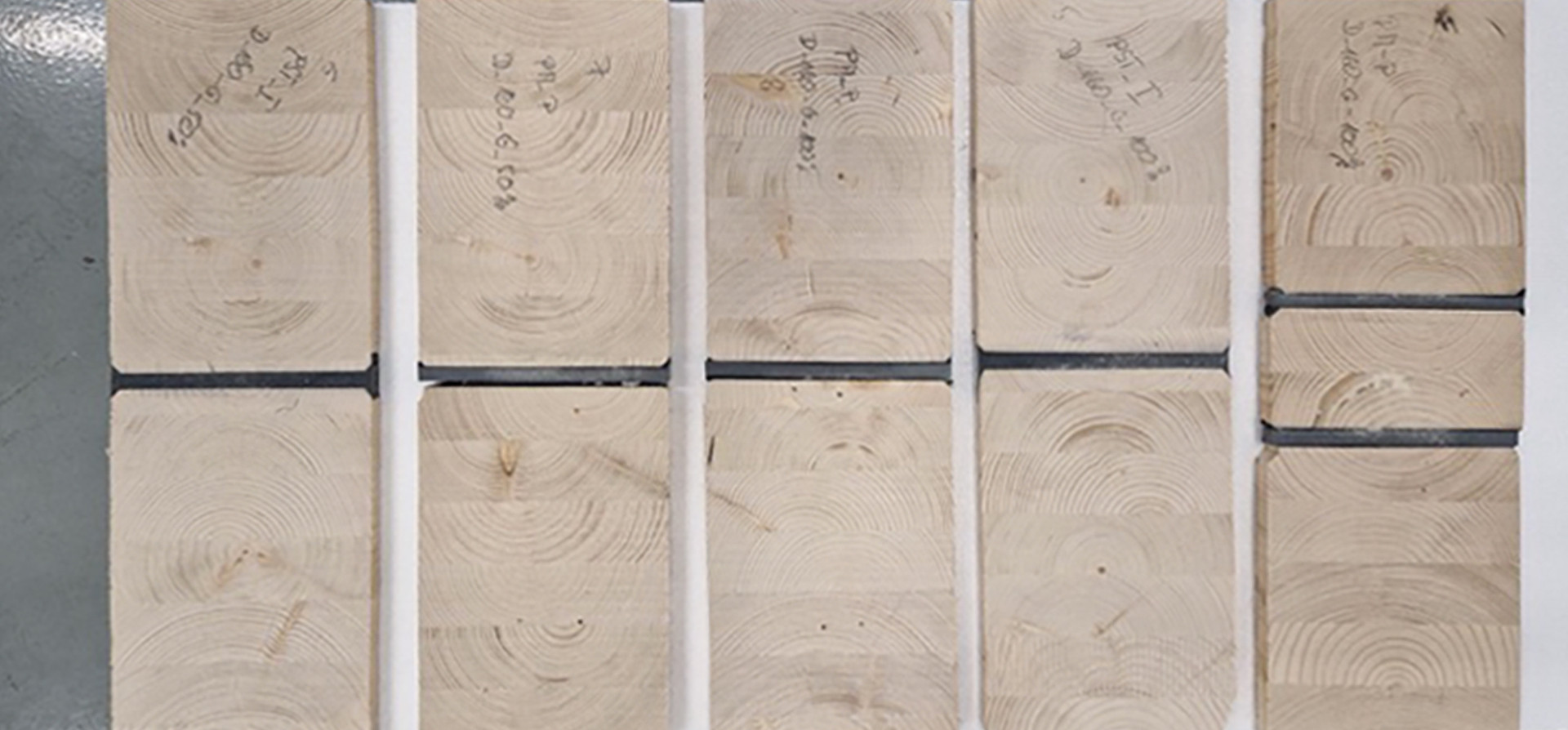
ABOUT EXPERIMENT PARTNER AND PRODUCT
FlexAndRobust line of products is developed from polyurethane flexible joints which are dedicated to structural and non-structural bonding of elements made of various materials (concrete, masonry, timber or steel).
MEASUREMENT & VERIFICATION (PM&VL 9)
The PM&VL9 is built on a deep understanding of the performance of wood-based envelope elements and structures. It focuses on specific issues, properties, and performances of wooden structures, addressing essential requirements — from fire reaction to sustainability, including environmental footprint considerations.
PARTNERS
Scientific partner
ZAG Slovenian National
Building and Civil
Engineering Institute
Industrial Partner
Flex And Robust
Main author:
Dr. Urška Blumauer
ZAG Institute
The flexible structural joints produced by FlexAndRobust underwent reaction to fire testing as well as fire resistance testing to determine its fire properties. Within the reaction to fire testing Cone calorimeter according to EN ISO 5660-1 and small flame tests according to SIST EN ISO 11925-2 were performed on small scale samples, namely 100 x 100 mm and 90 x 240 mm respectively for two different materials of flexible joints – PST_I and PM_P. For the resistance to fire test two different materials in two different thicknesses (80 mm and 160 mm) were tested in bending and in tension during exposure to standard fire curve as in ISO 834. During the fire resistance test the temperature development in timber elements and flexible structural joints was measured. At fire resistance testing of flexible structural joints the conditions in the furnace and temperature measuring method were performed according to standard SIST EN 1363-1.
Design of Experiments
1- Cone calorimeter test according to ISO 5660-1.
2- Small flame test according to SIST EN ISO 11925-2.
3- Fire resistance test of joints with furnace conditions and temperature measuring method according to SIST EN 1363-1.
Tested specimens:
PST_I (top) and PM_P (bottom) type of flexible structural joint by FlexAndRobust.
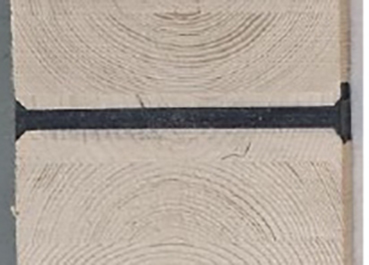
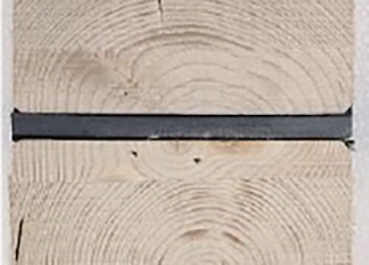
Results
Cone calorimeter tests: Flexible joint between two timber members was tested with constant incident heat flux of 50 kW/m2. Three conditions have been considered; with joint in line with structural surface, and with joint 20 mm and 40 mm withdrawn from the surface to simulate reduction of the material inside the joint. In the first case the joint material ignited before the surrounding wood, otherwise it ignites when the wood burning front reached the joint surface.
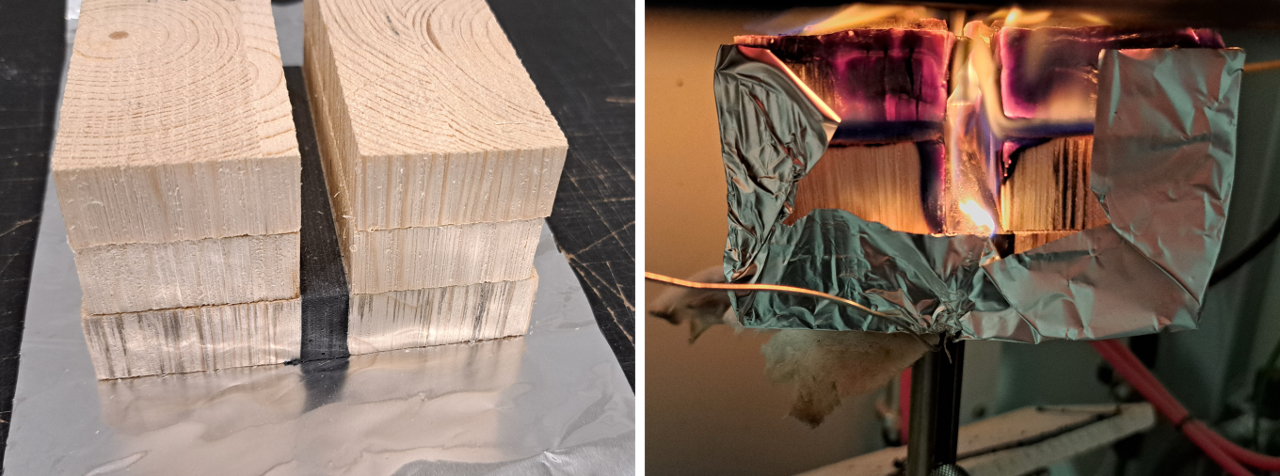
Cone calorimeter test of flexible joint – simulation of reduction of material.
Small flame test: Flexible joint was exposed to a small flame for 30 seconds at the edge and the surface of the joint. Flexible joint material PST_I and PM_P ignited and in case of PM_P flaming droplets ignited filter paper under the test specimen as well. Flaming of the material did not stop after the pilot flame removal.
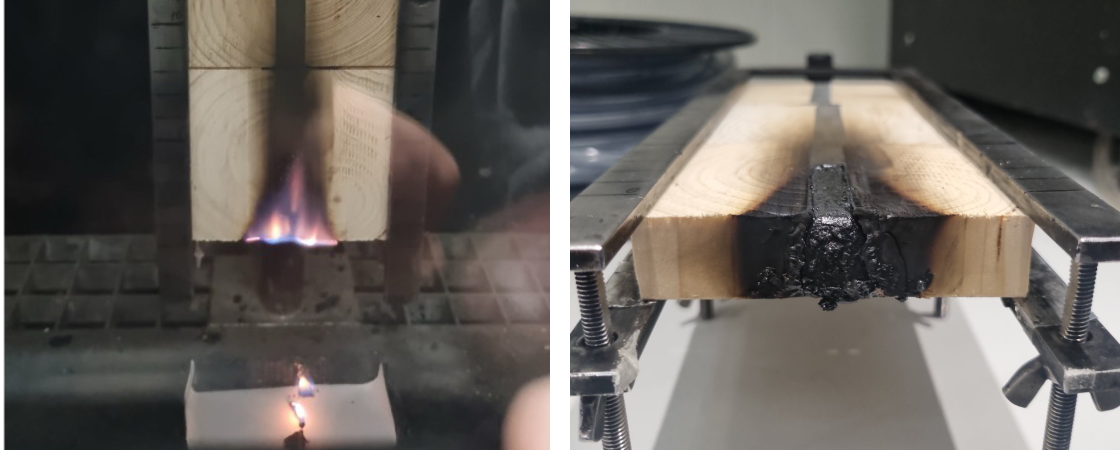
Small flame edge exposure for 30 s results in ignition of the flexible joint and dropping of flaming material.
Fire resistance test: Flexible joint was exposed to a small flame for 30 seconds at the edge and the surface of the joint. Flexible joint material PST_I and PM_P ignited and in case of PM_P flaming droplets ignited filter paper under the test specimen as well. Flaming of the material did not stop after the pilot flame removal.
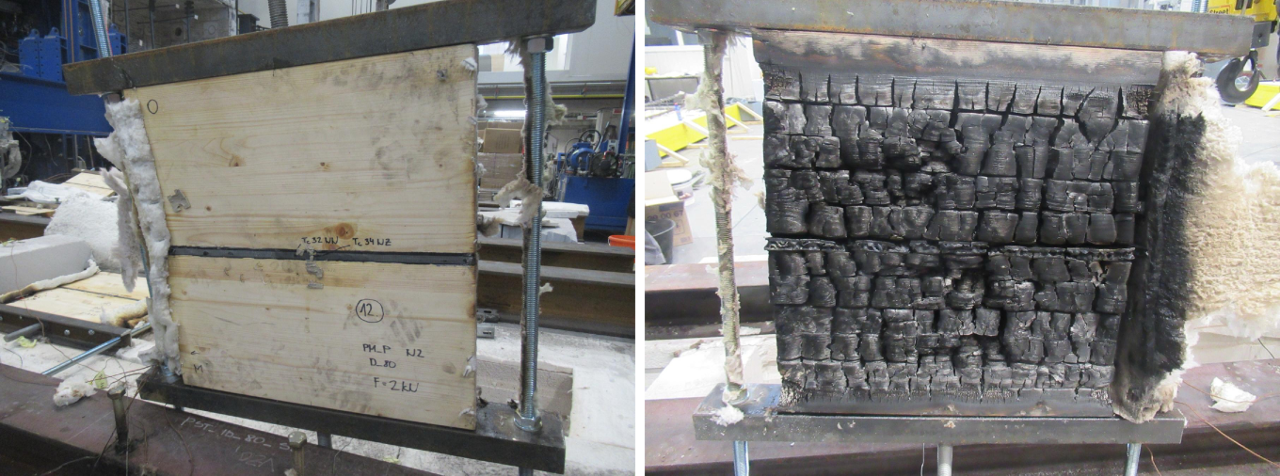
Flexible joint in tension after fire resistance test: unexposed side (left), exposed side (right).
Conclusion
Cone calorimeter tests indicated that when polyurethane material is exposed to direct heat flux, it ignites before the surrounding timber. The small flame test show that polyurethane material did not stop burning after the pilot flame was removed. In the fire resistance test it was noticed that timber specimens (with one or two polyurethan joints) in case of collapse, collapsed through timber. The results are of research interest and show that timber elements of stronger mechanical properties should be used to obtain collapse through the flexible joints in case of fire resistance test.
Open Innovation outcomes
The research activity was conducted exclusively between ZAG and FlexAndRobust. Fire resistance test design was custom made for this specific product since it is a mix of sealant and kit material. The results will be shared in a scientific paper that will be jointly written by both partners.
CONSTRUCTION SEGMENT
TEST CATEGORY
Fire resistance
DATE
06 October, 2025
